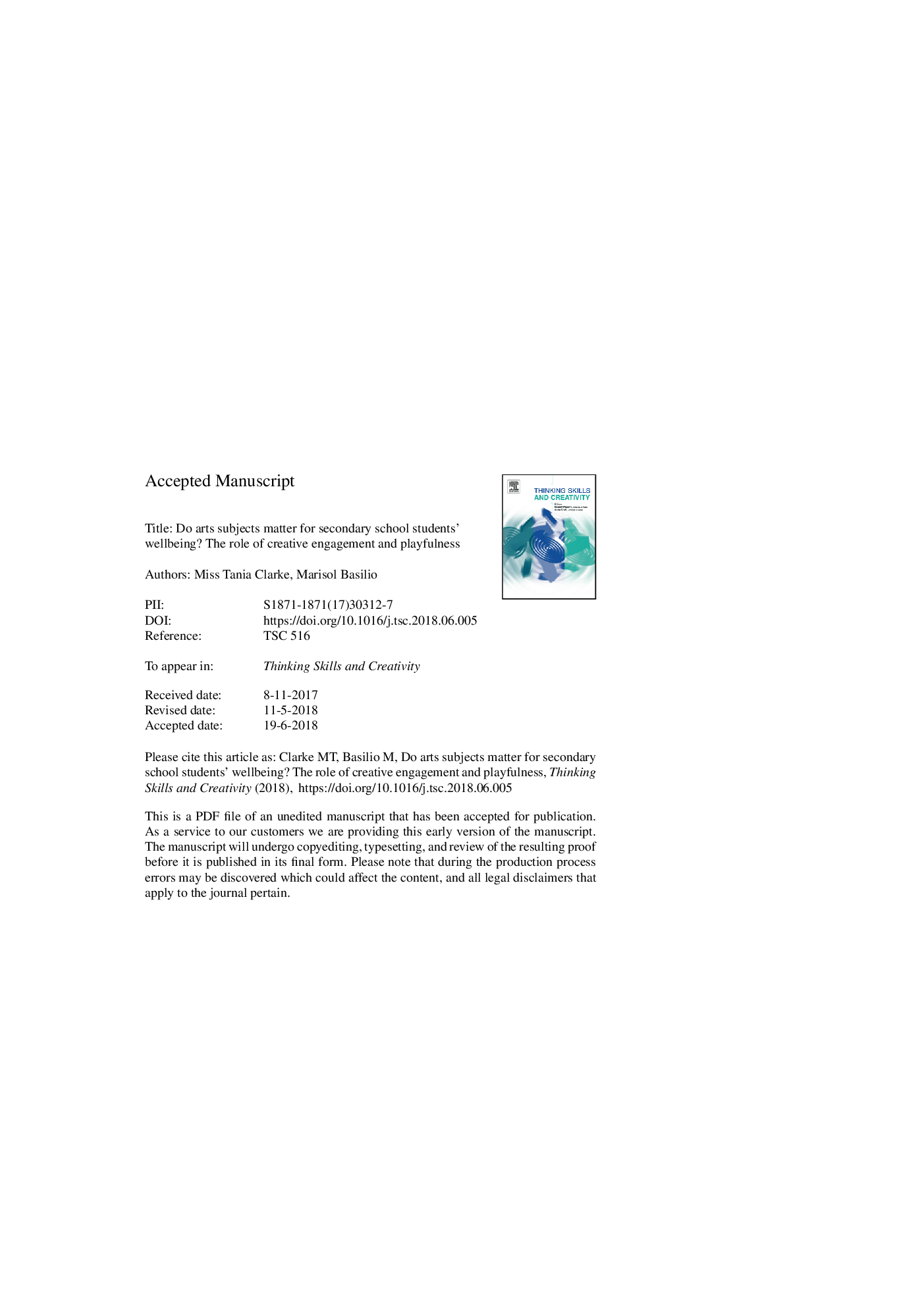| Article ID | Journal | Published Year | Pages | File Type |
|---|---|---|---|---|
| 6851773 | Thinking Skills and Creativity | 2018 | 43 Pages |
Abstract
Set against the backdrop of decades of educational policy that has increasingly undervalued the role of arts curricula in our schools (Abbs, 2003; Taylor, 1996), this study investigates its potential role in nurturing secondary students' wellbeing in school. The link between wellbeing and engagement in the arts has been well documented in the literature, however the extent to which this relationship exists specifically in adolescents in the school context is unknown. Similarly, studies with adults link individual playfulness and wellbeing, but this has not been examined in adolescents, and particularly in relation to the opportunities for being playful that students perceive in the school context. In this study we address these two gaps, and further propose a model in which students' wellbeing is predicted by the levels of playfulness perceived in school and mediated through their interconnectedness with classmates. Secondary school pupils (nâ¯=â¯275 in Year 7 and Year 10) were administered a battery combining existing instruments measuring students' subjective wellbeing in-school (McLellan & Steward, 2015) their individual playfulness (Barnett, 2007), and two new scales developed based on existing instruments (Vallerand et al., 2003) measuring pupils' engagement in performing arts and their perceived opportunities for playfulness in school. Man- Whitney U tests indicated younger pupils engaged in performing arts had significantly lower subjective wellbeing, competence motivation in the core subjects at school and individual playfulness than their counterparts. These findings were reversed for older pupils engaged in performing arts, evidencing significantly higher subjective wellbeing than their counterparts. No differences were found in older pupils' competence motivation in the core subjects. Spearman's correlations and mediation models suggested a positive relationship exists between playfulness, life satisfaction and connectedness at school. A mediation model in which opportunities for playfulness predicted student's wellbeing through interpersonal relationships was significant.
Related Topics
Social Sciences and Humanities
Psychology
Developmental and Educational Psychology
Authors
Tania Clarke, Marisol Basilio,
